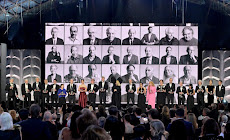CERN, a European research organization that operates the largest particle physics laboratory in the world, has decided to build a 100-kilometre circular super-collider to uncover the Higgs boson’s secrets.
On on 19 June, the CERN Council unanimously endorsed and approved an update to the European Strategy for Particle Physics that recommends further work on a huge 100 km collider - dubbed the Future Circular Collider (FCC), which would be built in an underground tunnel near CERN’s location in Geneva, Switzerland. It is to be noted however that the approval is not yet a final go-ahead.t2
 |
| A schematic map showing where the Future Circular Collider tunnel is proposed to be located (Image: CERN) |
In particle physics, colliders are used as a research tool, as they accelerate particles to very high speed (kinetic energies) and let them collide with other particles. with this, physicistsacross the globe hope that it will help answer some of the fundamental open questions in physics, which concern the basic laws governing the interactions and forces among the elementary objects, the deep structure of space and time, and in particular the interrelation between quantum mechanics and general relativity.
The new collider, FCC, is expected to cost at least €21 billion (US$23.4 billion) and would be a follow-up to the lab’s much famous Large Hadron Collider, which is the world's largest and most powerful particle accelerator, first started up in September 2008.
The goal of the FCC is to greatly push the energy and intensity frontiers of particle colliders, with the aim of reaching collision energies of 100 TeV, in the search for new physics.
The FCC Study, hosted by CERN, is an international collaboration of more than 150 universities, research institutes and industrial partners from all over the world.
The new machine would collide electrons with their antimatter partners, positrons, by the middle of the century. The design will enable physicists to study the properties of the Higgs boson and, later, to host an even more powerful machine that will collide protons and last well into the second half of the century.
As per the European Strategy for Particle Physics Update, the approved document strategize the FCC into two stages of development --
1) CERN would build an electron-positron collider with collision energies tuned to maximize the production of Higgs bosons and understand their properties in detail.
2) Later in the century, the first machine would be dismantled and replaced by a proton-proton smasher. That would reach collision energies of 100 teraelectronvolts (TeV), compared with the 16 TeV of the LHC, which also collides protons and is currently the most powerful accelerator in the world.
The goal would be to search for new particles or forces of nature and to extend or replace the current standard model of particle physics. Much of the technology that the final machine will require has yet to be developed, and will be the subject of intensive study in coming decades.
Via ~ Nature.com












 IndianWeb2.com is an independent digital media platform for business, entrepreneurship, science, technology, startups, gadgets and climate change news & reviews.
IndianWeb2.com is an independent digital media platform for business, entrepreneurship, science, technology, startups, gadgets and climate change news & reviews.



